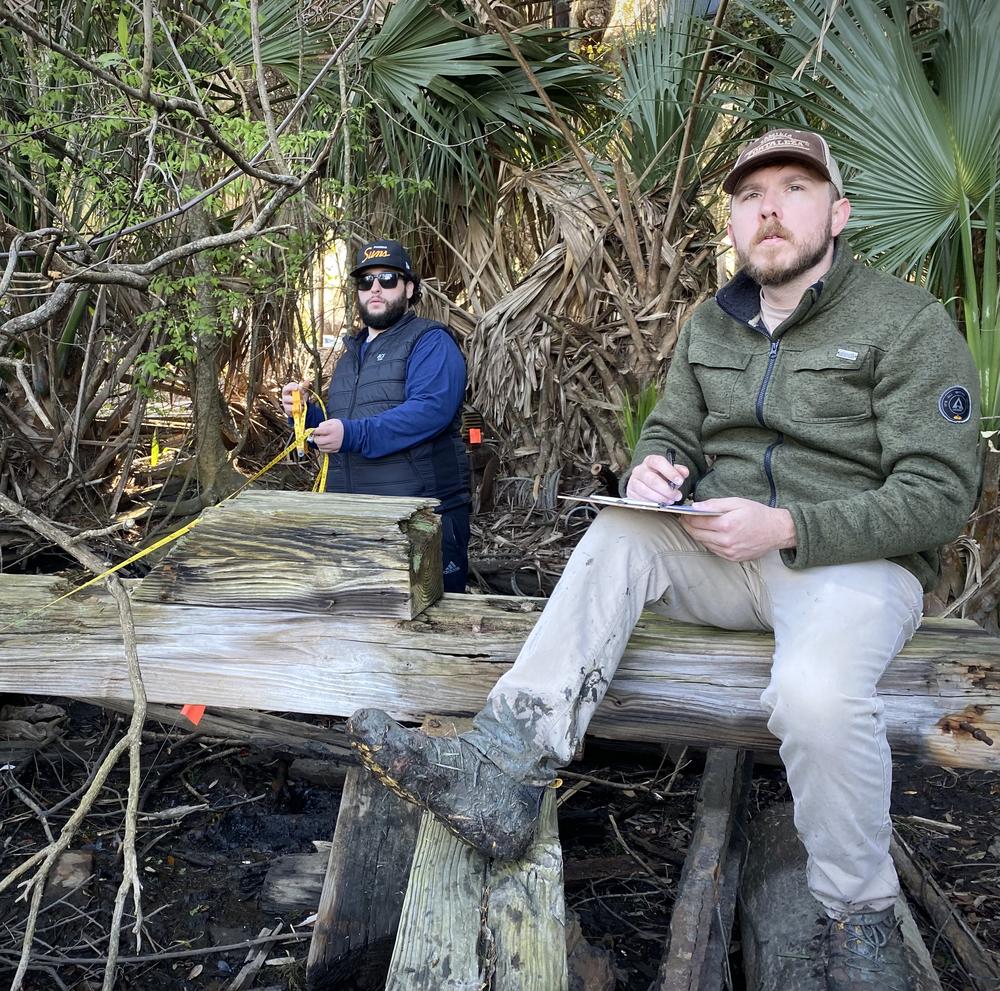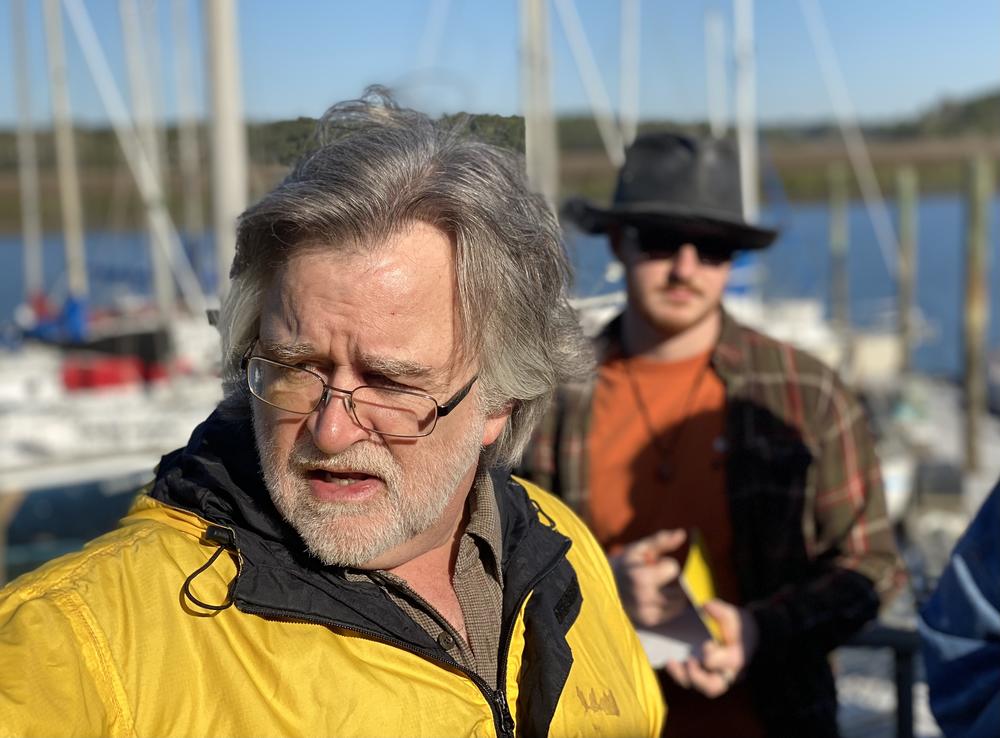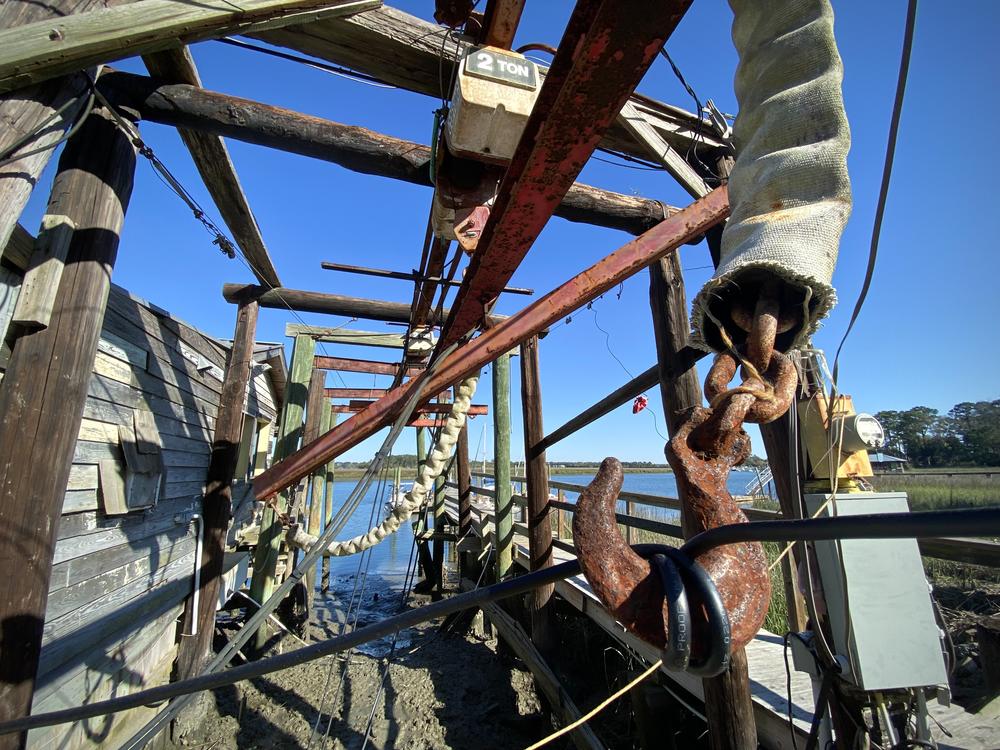
Caption
Maritime history students at Georgia Southern University measure old boat rails at Young's Marina.
Credit: Benjamin Payne / GPB News
|Updated: May 20, 2022 8:41 AM
Jack Kronowitz is trudging through a muddy river bank, trying not to trip as he scans the ground for artifacts. Finally, he finds one — sort of.
“There's a whole CD player in there,” Kronowitz says. “Like, circa 2005.”
A bygone era, to be sure, but not quite the historical period that Kronowitz and his Georgia Southern University classmates are hoping to document at Young's Marina on Wilmington Island, just east of Savannah.
As one of the oldest Black-owned marinas in Georgia, it's part of a new research project at GSU that seeks to fill in the gaps surrounding maritime history as it pertains to the experiences of African Americans.
“One of the things I've noticed about Savannah is that it's untapped in terms of this kind of history,” said GSU history professor Kurt Knoerl, whose maritime history students have gathered on a Saturday morning to map what appears, at first blush, to be abandoned railroad tracks.
In fact, they're old boat rails. Marina owner Sarah Suggs is excited to learn more about them, as they're what her grandfather Willie Young would use to lower his hand-built boats into Turner Creek off of the Wilmington River in the early 1900s, back when his business was called Young's Fishing Camp.

Maritime history students at Georgia Southern University measure old boat rails at Young's Marina.
Referring to the written report that the students are preparing for her, Suggs said, “It gives me an opportunity to be cautiously proud.”
Proud of the history behind the property — which Young bought with his brother-in-law William Soloman — but cautious about the obstacles that she and other Black business owners still face more than 100 years later.
“If you own a black business, it takes a lot longer to do anything,” Suggs said. “I've had projects that I'm responsible for — they've taken three-plus years. I've had people that don't know I'm Black, and once I come out that back door, I've seen people just get in their cars and leave. I've had a lot of my neighbors — they will bring their children to go down and look at the sailboats. [But] they would never do business with us.”
Still, Suggs says that things are better now than during her childhood, when her father Isaac Young owned the business.
Aside from Young's Marina, the research project has been studying a number of maritime sites where African American history runs deep, such as Harris Neck National Wildlife Refuge along Blackbeard Creek between Savannah and Brunswick. Originally the home of a Gullah Geechee community, residents were displaced by the federal government during World War II to build an airfield.

Georgia Southern University history professor Kurt Knoerl gives instructions to his maritime history students on the dock of Young's Marina.
Looking ahead, Knoerl says that the overall project — supported by a grant from the Georgia Sea Grant College Program — has raised even more questions for future exploration.
“For instance, there are oyster processing places throughout the area that really haven't been explored or mapped out, other than Pinpoint Heritage Museum, which is wonderful, and they do a great job of that,” Knoerl said. “But that's one of many in the area. There is the boat-building tradition in Savannah that could use more study. So, deciding what to do next — it's a fun problem to have.”

The boat hoist at Young's Marina, one of the oldest African American-owned marinas in Georgia
Aside from archeology, other students are collecting oral histories, including childhood memories from Sarah Suggs.
“I knew how to put a boat in the hoist, and I don't think my daddy knew what I knew,” Suggs recounted. “So, one day I put a boat in the water, had the boat up in the air, about to go in the water. My daddy comes and he says, ‘Girls don't do that,’ and literally bumped me out of the way. So, the fact that I now keep the train on the track, I know my father is in heaven looking down — ‘That girl did it anyway.’”